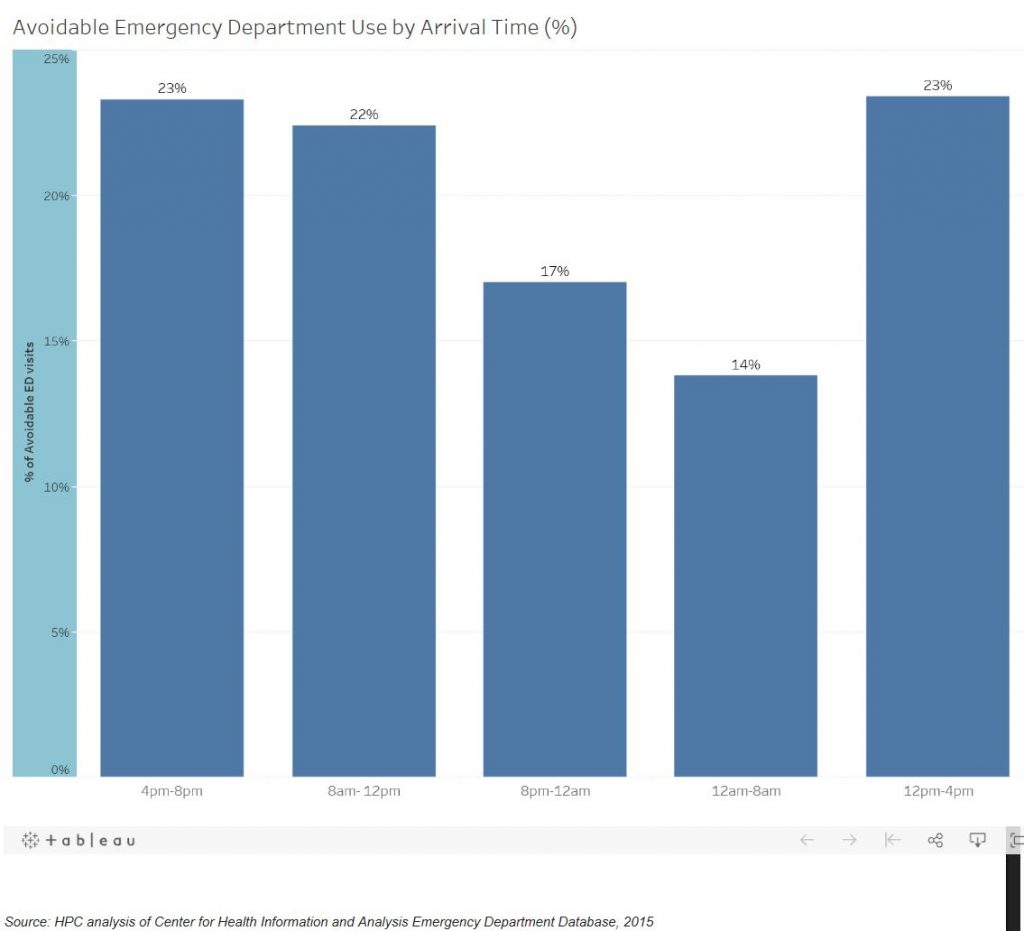Avoidable ED visits – what does “avoidable” mean and what can we do about this issue?
An employer group in Massachusetts is coming together to reduce avoidable emergency department (ED) visits, in large part because they claim ED visits are a key driver of health care costs in the Commonwealth. According to the coalition, “ED visits can be five times more expensive than primary care or urgent care visits.” Not only are ED visits expensive compared to other health care services, the coalition cites a Massachusetts Health Policy Commission estimate of $300-350 million in annual costs, in total, just for commercially insured people in Massachusetts.
While this seems laudable, it turns out there’s a big difference of opinion about the definition of “avoidable ED visit.” The coalition’s statement claims studies show more than 40% of ED visits are avoidable. Some of the most common conditions for avoidable ED visits, accordingly to this employer group, include acid reflux, allergies, back pain, bronchitis, sinusitis, stomach pain, and urinary tract infections. At first glance, these maladies don’t seem like they need to be treated in an emergent setting.
At issue is the definition of “avoidable.” According to the American College of Emergency Physicians (ACEP) only 3.3% of ED visits are avoidable. In a study based on data from the National Hospital Ambulatory Medical Care Survey (NHAMCS) for years 2005 to 2011, Renee Hsia, MD, MSc, of the Department of Emergency Medicine at the University of California, San Francisco, found many of the visits to EDs that are classified as “avoidable,” such as those listed above, also involve either mental health or dental issues.
Dr. Hsia argues, “This suggests a lack of access to health care rather than intentional inappropriate use is driving many of these ‘avoidable’ visits. These patients come to the ER because they need help and literally have no place else to go.”
So, are more than 40% of ED visits avoidable or is it less than 5%? This is a fairly big difference. In ACEP’s view, the entire concept of “avoidable ED visits” should be questioned. “Despite a relentless campaign by the insurance industry to mislead policymakers and the public into believing that many ER visits are avoidable, the facts say otherwise,” said Becky Parker, MD, FACEP, the president of the American College of Emergency Physicians (ACEP). “Most patients who are in the emergency department belong there and insurers should cover those visits. The myths about ‘unnecessary’ ER visits are just that – myths.”
It seems essential to know more about why people are going to the ED for health issues that don’t fall into the category of: I was taken to the ED in an ambulance because I was unconscious, or my friend drove me after I sliced off my finger…The Massachusetts Health Policy Commission has been gathering all sorts of data the past few years, and below is the chart they have published on avoidable ED use.
As the chart shows, nearly 70% of “avoidable ED visits” happen between 8am and 8pm. This is probably not the typical idea that people have in their minds about when “avoidable ED” visits occur. So based on Massachusetts data showing the majority of avoidable ED visits happening during daytime hours, it seems more likely that the ACEP point of view is correct: Maybe these visits really do indicate access to care problems more than patient choice – which possibly could be changed simply by improved education.
The Health Commission chart is accompanied by some analysis from the 2014 Massachusetts Health Insurance Survey. In the survey, of the respondents who had been to the ED in the past year, “over half said they had done so because they could not get a timely appointment with their usual source of care.” Ideas to address this lack of access include encouraging patients to seek care at retail clinics or urgent care centers, encouraging providers to expand office hours, making hotlines and telehealth more available, and “granting Nurse Practitioners full practice authority.”
Reducing unnecessary health care costs is a common goal across individuals, families, employers, and governments. The Massachusetts Employer-Led Coalition to Reduce Health Care Costs zeroes in on “avoidable ED visits,” listing a focus on four levers for impact:
- Employee engagement
- Data and measurement
- Multi-sector collaboration
- Policy advocacy
We often focus on what works, and it seems notable that the Commonwealth has a range of data showing expanding access to a broader range of providers (by changing scope of practice laws and reimbursing more convenient types of care) seems highly likely to reduce “avoidable ED visits.” As more specificity is put forth by the coalition, time will tell whether their policy solutions match the problem.


Leave A Comment